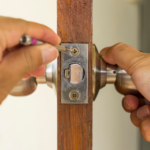The quality of life experienced by individuals and societies can vary widely from place to place. Many different factors affect the comfort, health and happiness of the residents of global cities. Factors like hours of sunlight, rainfall, temperature, population density, pollution levels, areas of green space and average salary earned all play a part in the overall quality of life. We’ve taken a closer look at the quality of life in cities around the world and illustrated our findings as artwork.
Based on the latest World Happiness Report, these striking visuals illustrate the various factors that influence the quality of life for each city and its residents. What appear to be abstract patterns are actually representations of what a city is like to live in.
Below is a key to help you understand the illustrations and to identify significant areas that affect the overall happiness of the residents in each city:

KEY:
- Green View Index (each circle represents 10% of the total green space in a city). This measures tree canopy coverage in any given city and scores it out of 100. Green space has been found to boost the wellbeing and quality of life of urban dwellers, so higher scores are likely to indicate a high quality of life.
- Average Hours of Sunshine each city is exposed to per year. Just like green space, sunshine improves our quality of life.
- World Happiness Rating 2015-2017 (1-105) each section to nearest 20. Data is collected from respondents about their own lives. This data is used to rate the happiness levels in a city or area.
- Average Monthly Salary $ – Larger coins represent 1000’s, smaller coins represent to nearest 100. Of course, higher salaries could lead to a more comfortable and better quality of life. But do they? Can you really buy happiness and a high quality of life?
- Average Monthly Temperature plotted over a year. Extremes of temperature are likely to compromise quality of life. Steady, warm and balmy climates promote happiness and health, leading to a better quality of life.
- Pollution Rating (µg/m3) the wider this bar, the higher the pollution (1-32). High levels of pollution have a negative effect on our quality of life, as they can impact on our health and wellbeing.
- Population Density p/km2 – column 1 = 1000’s, column 2 = 100’s, column 3 = 10’s, column 4 = units. Population density is thought to compromise quality of life. Most people are much more comfortable when they have their own space, and densely populated areas don’t allow for this.
- Average Monthly Rainfall plotted over a year. High rainfall is likely to have a negative impact on quality of life, but very low levels could be equally as concerning. Some rainfall is needed to keep crops and green space healthy, so medium levels of rainfall will indicate a better overall quality of life.
Global Happiness: Illustrated
A visual representation of the differences in global quality of life.


























Improving Your Quality of Life
Perhaps the city you live in isn’t providing the quality of life you’re after. So, what can you do to improve it?
Okay, you can’t change the temperature, hours of sunlight, rainfall or population density. Nor can you make a big change to pollution levels in your city. But if you love where you live and also want to improve your quality of life you can make the most of what’s available. Here are some ideas on how.
Improving Your Quality of Life at Home:
- Let in the light: Daylight improves our mood and outlook, which all adds to our quality of life. Maximise your exposure to the sunlight available by making sure it filters through your home. You can achieve this by adding larger windows or doors with a vast expanse of glass. Bifold doors are a great option for increasing the sunlight in your home.
- Home working: Average monthly salary affects overall quality of life. But if you enjoy earning that salary more it could improve things for you. Creating a sanctuary to work in at home will make all those hours spent toiling that little bit more pleasant.
- Add a little green: Create your own green space in your home. If nature and plant life are good for us, why not cultivate your own garden or house plants to create the benefit of green space without leaving the comfort of your own home?
Good Habits to Improve Quality of Life:
- Spend more time outside: Make the most of limited sunshine by actually enjoying it. Enjoy the green space available by spending time in it. You can’t increase what’s there, but by increasing your exposure to it you’ll be improving your own personal quality of life.
- Find some quiet: In densely populated areas you can find a sense of freedom in a quiet space of your own. Whether that’s an uncluttered space at home or a wide-open outdoor area, find what works for you and regularly spend time there when things get too much.
- Limit time in polluted air: If you do live in a city with higher levels of air pollution, try to limit your exposure to this. Spending more time indoors can help, as can spending less time around sources of air pollution such as busy roads.
SOURCES
http://senseable.mit.edu/treepedia
http://worldhappiness.report/ed/2018/





